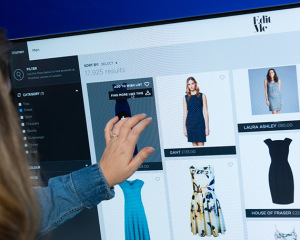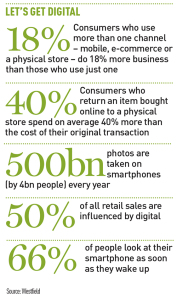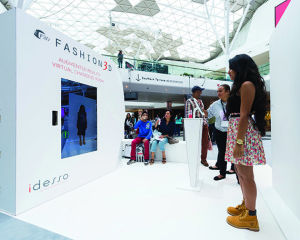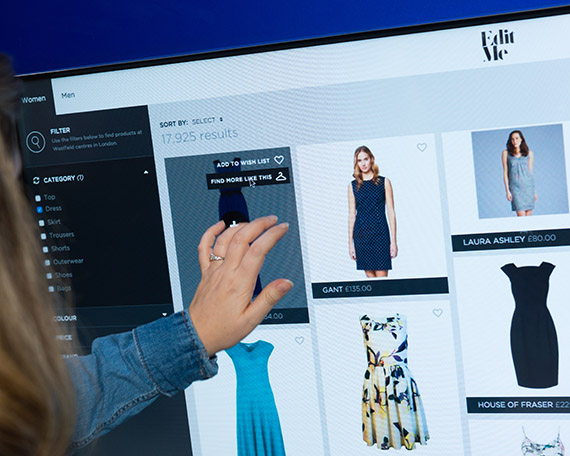 More than half of the global population of planet earth have a smartphone, 66% of those wake up with them and if you are lucky enough to be under the age of 35, you look at yours once every two minutes. Which might explain why three-quarters of us use our smartphone on the loo.
More than half of the global population of planet earth have a smartphone, 66% of those wake up with them and if you are lucky enough to be under the age of 35, you look at yours once every two minutes. Which might explain why three-quarters of us use our smartphone on the loo.
The adoption of smartphones is the success story of the century. Since their introduction in 2007, they are now used by 4bn people. And a vast and increasing number of us are now using them for some part of the shopping experience.
Two years ago, around 14% of retail sales were influenced by digital. By September last year that figure had grown to half.
It is statistics like this that have led shopping centre developer Westfield to invest time and money into turning itself into as much a technology company as it is a real estate firm.
The group is in the process of launching a digital platform that will further help it embrace the convergence of the digital and physical worlds of shopping. It has selected London as a pilot for the platform, owing to its rapid adoption of technology and the array of international retailers spread across its two flagship malls in the capital – the 1.7m sq ft Westfield London in White City, W12, and 1.8m sq ft Westfield Stratford at the Olympic Park, E15.
Myf Ryan, director of marketing at Westfield UK & Europe, says that shoppers are no longer content with just the physical experience of shopping, they want a virtual experience too. Something that takes them beyond the realms of their current location.

Since 2012 Westfield has been running Future Fashion, an all-digital style event that features massive interactive screens in its malls that allow shoppers to browse the latest collections and make their own style boards. It also has 3D catwalk shows so shoppers can experience what it feels like to have a front-row seat at Fashion Week, and photo booths that allow people to try out all their looks and upload them straight to Facebook, Instagram or Twitter. Everyone loves a selfie, after all.
This April it teamed up with augmented and virtual reality specialist Inition to showcase the key fashion trends for spring/summer 2015. Inition has been working on interactive experience installations for 15 years. But this year, for the first time, it has teamed up with Westfield to create a world first, combining its virtual reality headset with tracking technology to allow shoppers to enter a virtual world and explore.
The Oculus Rift virtual reality goggles allow customers to take a three-minute, 360-degree immersive journey into three different worlds, each representing the key trends of the season – floral, denim and future modern. A leap-motion sensor attached to the front of the goggles picks up the wearer’s hands and allows them to turn and even fly in their virtual world. The experience attracted more than 7,000 participants.
“Combining Westfield’s insight into the key spring/summer 2015 fashion trends with Inition’s expert knowledge of virtual reality technology creates a truly unique retail theatre experience,” says Inition managing director Simon Dutton.
Adding to the experience, shoppers are able to create a fashion avatar using Westfield’s Edit Me microsite, allowing them to experiment with and discover new looks and products that they can then find and – importantly – buy in the mall.
 Westfield’s research shows that shoppers are becoming more and more eager to experience retail through digital means. It found that more than half would use augmented reality in a shopping environment and that close to 60% were keen to use virtual mirrors – an interactive mirror screen that allows customers to “try on” outfits without physically wearing them.
Westfield’s research shows that shoppers are becoming more and more eager to experience retail through digital means. It found that more than half would use augmented reality in a shopping environment and that close to 60% were keen to use virtual mirrors – an interactive mirror screen that allows customers to “try on” outfits without physically wearing them.
“Technology is transforming the shopping habits of the customer,” says Ryan. “They are demanding much more from their shopping experience. They want it to be much more personalised.”
She adds: “Online and offline are not mutually exclusive anymore. Digital technology has to enhance the physical experience. People want a digital experience in a physical world.”
Westfield has a team in San Francisco dedicated to working on the latest digital innovations through its Westfield Labs project, to keep up with consumer demands and help its retail tenants continue to capture spend.
“Westfield has always endeavoured to anticipate change and to adapt to shoppers needs,” concludes Ryan, “which means we have to integrate the physical and digital worlds together.”











